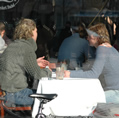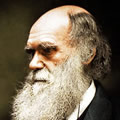SRSP 16-19 Topic 3 Unit 1c – The 20th Century
This unit consists of five different sections. The first of these deals with fundamentalism, examining what is meant by this term which is widely used today. There is also a unit which looks at quantum theory, quantum mechanics and the scientific and philosophical consequences of these theories. Einstein is considered as an example of the contrast between the Newtonian way of seeing the world and that influenced by quantum experiments.
Some other discoveries have important implications for relating science and religion; the discovery of the double helix structure and the Human Genome project are explored in sections three and four. None of these can be studied without reference to the people who have been involved with them, including some of the notable women (section five).
This unit consists of 5 sub-units and is suitable for students aged from 16 to 19 years
- 3c[i]: Fundementalism – 1 lesson
- 3c[ii]: The New Physics – 4 lessons
- 3c[iii]: Crick and Watson – 1 lesson
- 3c[iv]: The Human Genome – 1 lesson
- 3c[v]: Women in Science and Religion – 1 lesson
Key Questions
- Why are quantum theory and quantum mechanics such key ideas?
- What is meant by fundamentalism?
- Who were the people involved in the discovery of DNA?
- What are the implications of the Human Genome project for the relationship between Science and Religion?
- In what ways have women begun to play a more prominent role in modern physics?
Some of the materials can be viewed on screen and some can be downloaded for editing or printing. To view the pdf files you need Adobe Acrobat Reader. See the about section for more details.
Unit Resources
3c[i]: Fundementalism
Lesson Plan: Fundementalism (Word)
Student Resource Sheet 1: Statements of Belief (PDF)
Student Resource Sheet 2: Extension activity (Word)
Student Worksheet: Statements of Belief (Word)
Teacher Resource Sheet: Background information (Word)
3c[ii]: The New Physics
Lesson 1: Lesson Plan: Quantum Theory (Word)
Student Resource Sheet 1a: Rules for the Quantum Game (Word)
Student Resource Sheet 1b: Quantum Game: Community Cards (PDF)
Student Resource Sheet 1c: Quantum Game: Game Pieces (Word)
Student Resource Sheet 1d: Quantum Game: The Game Board (PDF)
Lesson 2: Lesson Plan: Quantum Mechanics (Word)
Resource Powerpoint: What is Quantum Theory? (PPT)
Teacher Resource Sheet 3: The Mind of God (Word)
Lesson 3: Lesson Plan: Consequences of Quantum Theory (Word)
Teacher Resource Sheet 3: The Mind of God (Word)
Student Resource Sheet 4: Modern Physics (Word)
Student Resource Sheet 5: The Mind of God (Word)
Student Resource Sheet 5[LA]: The Mind of God (Word)
Lesson 4: Lesson Plan: Einstein (Word)
Student Resource Sheet 6: Einstein’s God (Word)
Student Resource Sheet 6[LA]: Einstein’s God (Word)
Teacher Resource Sheet 7: Einstein’s God (Word)
3c[iii]: Crick and Watson
Lesson Plan: Crick and Watson (Word)
Student Resource Sheet 1: Character Descriptions (Word)
Student Resource Sheet 2: The Discovery of the Double Helix (Word)
3c[iv]: The Human Genome
Lesson Plan: The Human Genome (Word)
Teacher Resource Sheet 1: Background Notes (Word)
Student Resource Sheet 2a: Genetically good enough? (Word)
Student Resource Sheet 2b: Genetically good enough? Cards (PDF)
Student Resource Sheet 3: Role Play (Word)
Student Resource Sheet 4: Decisions (Word)
3c[v]: Women in Science
Lesson Plan: Women in Science (Word)
Student Worksheet 1: Dame Louise Johnson (Word)
Student Worksheet 2: Questions (Word)
Student Worksheet 2[LA]: Questions (Word)
Student Worksheet 3: Gail Preston (Word)
Student Worksheet 4: Hannah Jones (Word)





